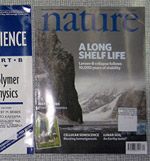Do biodiversity and carbon stocks overlap? The implications of REDD...
 Biodiversity,
Biodiversity,  Climate,
Climate,  Policy
Policy Scientists have examined how well our planet's biodiversity and carbon stocks overlap. The findings from their study could have major implications for the future of global conservation work.
The REDD incentive program to reduce emissions from deforestation will likely mobilize huge sums of money to protect areas with high levels of carbon stock. What this means for the conservation of biodiversity, is far from certain.
If the planet's areas of high biodiversity overlap nicely with the areas of high carbon biomass, then REDD could have the incidental benefit of protecting numerous species. However, if biodiversity and carbon stocks do not match up, then the priorities of REDD could drain dollars away from conserving important biological areas, or worse, encourage development in these relatively carbon-poor places.
To compare the two priorities, Bernardo Strassburg and fellow researchers overlaid global datasets of carbon biomass and the distribution of 20,697 mammal, amphibian, and bird species. They found that species diversity correlated highly with carbon stock levels. This makes sense given that many areas of high biodiversity also have high carbon biomass (e.g. the Amazon, the Congo).
On the surface, this sounds like really good news for conservation. However, looking deeper into the data, the researchers found some potential problems. Despite the high correlation, the results show that certain areas of high biodiversity have low carbon stocks (e.g. the Brazilian Cerrado, the Cape Floristic Province, and the Succulent Karoo). Species in these areas would likely lose out under a carbon-only mechanism.
Even more problematic, among the areas of high carbon stock, the researchers found a substantial variability in biodiversity levels despite the high statistical correlation between the two variables. So despite the big overlap in the two priorities, efforts focusing just on carbon might fail to protect areas of rich biological value. Given these potential issues, the researches recommend that REDD incorporate measures to protect biodiversity. They write,
"This could be done by inserting a biodiversity premium for emissions from more biodiversity-rich areas directly into the REDD mechanism, by setting aside a fraction of REDD financing for targeting biodiversity-rich areas that would not be conserved for their carbon content alone, or by promoting cooperation between programs for REDD and conservation at a national to international scale, redirecting conservation funding to these areas."
--Reviewed by Rob Goldstein
Strassburg, B., Kelly, A., Balmford, A., Davies, R., Gibbs, H., Lovett, A., Miles, L., Orme, C., Price, J., Turner, R., & Rodrigues, A. (2010). Global congruence of carbon storage and biodiversity in terrestrial ecosystems Conservation Letters DOI: 10.1111/j.1755-263X.2009.00092.x




Reader Comments